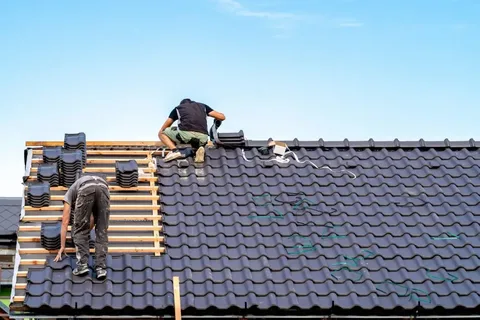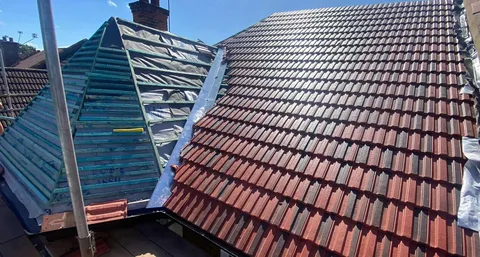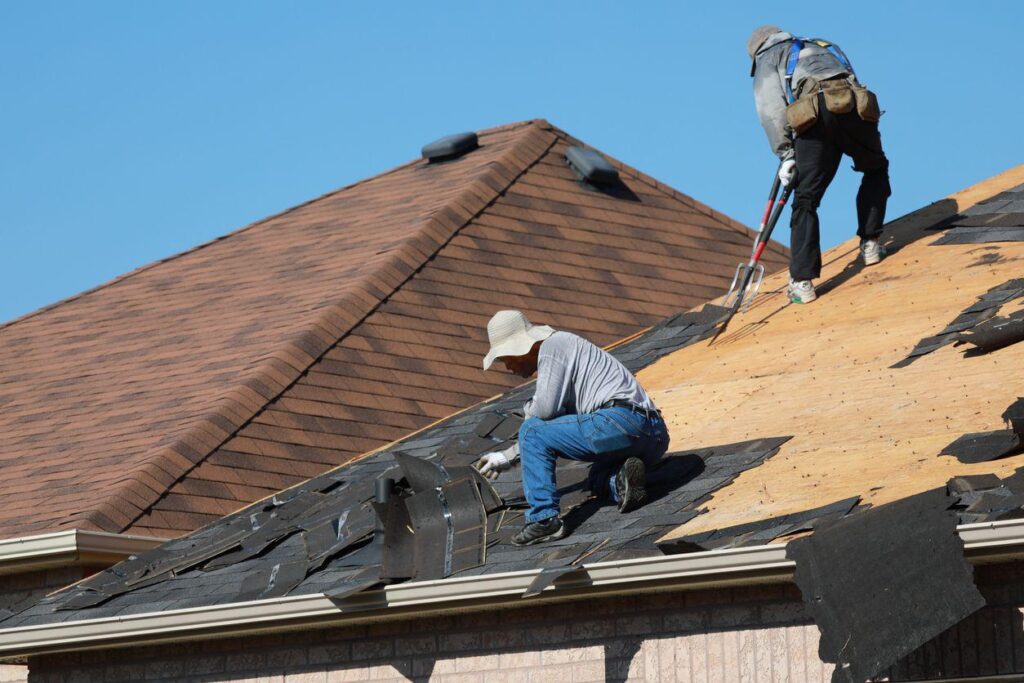Introduction
The decision to install metal vs shingle roofing depends on your local weather conditions, preferences, and budget. While shingles are the most common roofing material across the US, metal roofing is becoming increasingly popular in recent years due to a strong desire among homeowners for a more durable and weather resistant roof. They both have different price tags and lifespans. Both offer different weather performance and energy efficiency. Weighing the pros and cons can help homeowners to make an informed decision based on their long term goals.
Metal vs. Shingle: Which is the Right Choice For Roof Installation?
Are you tired of frequent roof repairs after every storm or weather event? Can’t meet the maintenance requirements of your old roof and considering a new durable roof installation? Extreme weather events are driving the roofing industry, with many homeowners opting for resilient energy efficient metal roofs to protect their homes and lower energy bills. If you are not sure whether you should choose shingles or metal, we have compiled a comparison guide to help in your decision.
| Fast Fact3 Tab or dimensional shingles cover roughly 80% of American homes and are by far the most common roofing choice. Metal roofing is gaining ground with more than 18% due to weather-related disasters, which are growing demand for resilient, longer-lasting materials. |
Here is your complete guide to metal vs shingle roofs and what factors you should consider before installation.
- The LifeSpan
Asphalt has an average lifespan of 15 to 30 years while more durable metal roofs can last anywhere between 50 to 70 years.
- Upfront Cost vs Long term Gain
Shingle roofing is a cost effective investment with a cost of $3 to $9 per square foot. Metal roofing has a higher upfront cost, averaging around $5 to $18 per square foot, but offers more long term value with increased protection from weather damage.
| Important factThe US roofing market size is expected to reach $33.44 billion in 2030 from $24.79 billion in 2025, growing at a CAGR of 6.17% |
- Energy Efficiency
Shingles can absorb the warmth and transfer the sun’s heat inside the structure. A metal roof, on the other hand helps lower energy bills by reflecting heat and resulting in a cooler indoor environment.
- Weight and Structural Requirements
Your roof design, pitch and complexity can best determine which roofing material is the right choice for you. Shingles are heavier than metal panels and the additional weight can be stressful for the structure.
- Performance in Various Weather Conditions
Metal is at risk in hailstorms and can be damaged due to denting, while asphalt shingles can not withstand humidity.
| Weatherability of Metal Vs Shingles Roofing | |
| Class A fire ratings | Depends on the type and composition. Fiberglass shingles have Class A fire ratings |
| Class 4 impact resistance | Class 1 – 2 impact rating |
| 180 – 200 mph wind resistance | 60 – 110 wind resistance |
| Designed to reflect the Sun’s heat. Up to 85% reflection | Designed to absorb heat. Up to 10% of heat reflection |
| Does not absorb moisture. Naturally sheds snow and ice | Can absorb moisture over time. Prone to algae growth and ice dam formation |
- Styles and Available Variety
As compared to the mostly darker tones of shingles, metal roofing is available in a wide variety of bright, vivid colors, styles and textures. Steel and aluminum are the main metal roofing types while 3tab and architectural shingles are the common asphalt shingle options.
- Maintenance Requirements
Shingles roofs require regular roof inspections and maintenance while metal roofs only require occasional cleaning and have minimal maintenance and repair needs.
- Impact on Home Resale
With extreme weather events like hurricanes and hailstorms becoming more common, metal roofs can increase the home’s resale value by more than 6% as compared to asphalt shingles. Homeowners can recoup up to 85% of roof installation costs with metal roofing.
| Did you know?In the Eastern US, homeowners can recoup up to 96% on average with metal roof installation. |
- Environmental Footprint
Metal roofing is made from 100% recyclable materials while asphalt shingles have low sustainability and are a petroleum based product.
Conclusion
Shingles are readily available and come with the manufacturer’s warranty, are easy to install and replace as compared to metal roofs. However, metal roofing is more durable and offers better long term value. Metal is sustainable while shingles are difficult to recycle once removed from your roof. Factors like your budget, local weather conditions and roof design can help determine which type of roof suits your home’s needs best.
FAQs
What are the most popular metal roofing styles?
Standing seams are the most popular with metal shingles and stone coated metal roofing also becoming more popular.
What is the average lifespan of metal vs shingle roofing?
Shingle roofs can last for around 15 to 20 years with proper maintenance, while the average lifespan of a metal roof is 40 to 60 years and can last 2 to 3 times longer than a shingle roof.
What are the statistics about various roofing financing options?
For roof financing options, 40% of homeowners prefer using a credit card, followed by 31% choosing a check. Only 9% use cash or other financing options such as availing contractors or other lenders’ financing.



